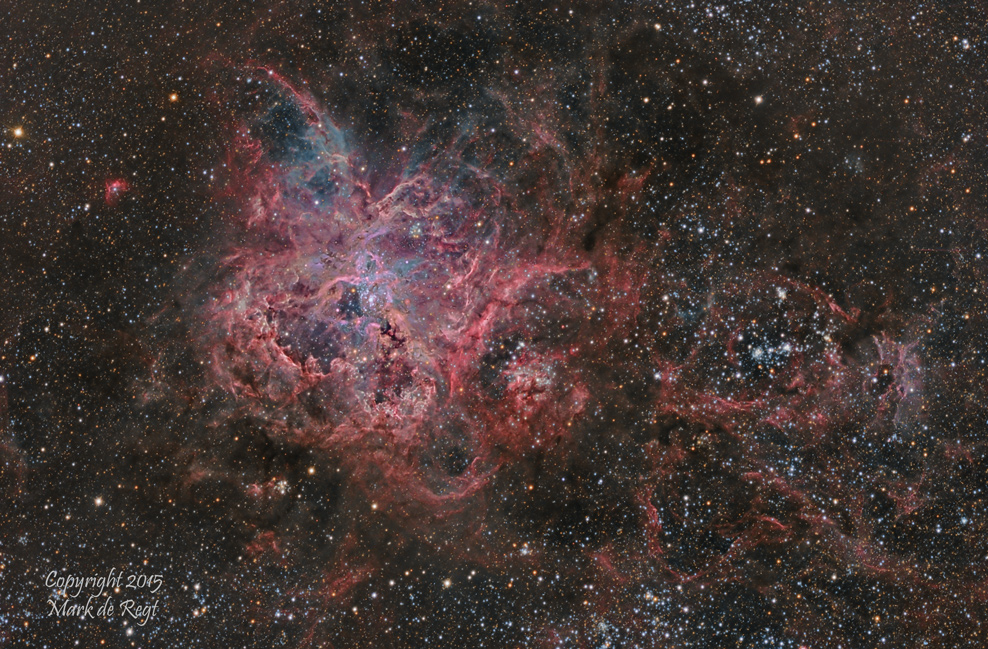

Tarantula Nebula: The Tarantula Nebula is a huge (more on that later) star-forming region in the Large
Magellanic Cloud (LMC), an irregular dwarf galaxy orbiting our Milky Way (I have a photo I took years ago of the entire LMC here,
showing the Tarantula Nebula toward the upper left of the image). Yes, this nebula is not even in our galaxy, and yet is is so huge that it fills the field of view on my (full-frame) camera!
This nebula is the largest and most complex star forming region that can be photographed by amateurs. The spidery part of the nebula is about 1,000 light-years across; the nebula is about 160,000
light years from us. Were it placed at the distance of Milky Way's Orion Nebula (a well-known huge star-forming region in the Milky Way which is only 1,500 light-years from us, and the nearest
stellar nursery to Earth--we see it in our sky as the sword of Orion), it would cover about 30 degrees of the sky (about equal to 60 full moons), and it's so bright it would cast shadows!
The arms of the Tarantula nebula surround NGC 2070, a star cluster that contains some of the brightest, most massive stars known (most visible in the center of the nebula), and is estimated to have a mass
450,000 times that of our sun. Massive stars have a short lifespan; there have been a number of supernovae in the vicinity of the Tarantula Nebula, including the very recent Supernova 1987A, which I was surprised and pleased to see shows up
in my image; it's highlighted in this version of this image (it's the tiny pink piece between the two small stars, toward the
right center of the image; there's a red arrow pointing right to it on the image).
Copyright 2015 Mark de Regt